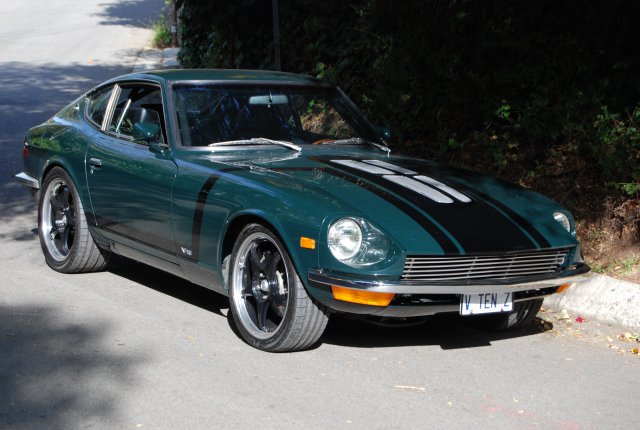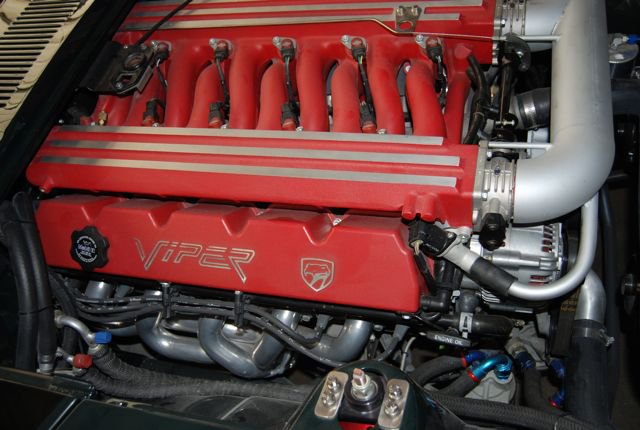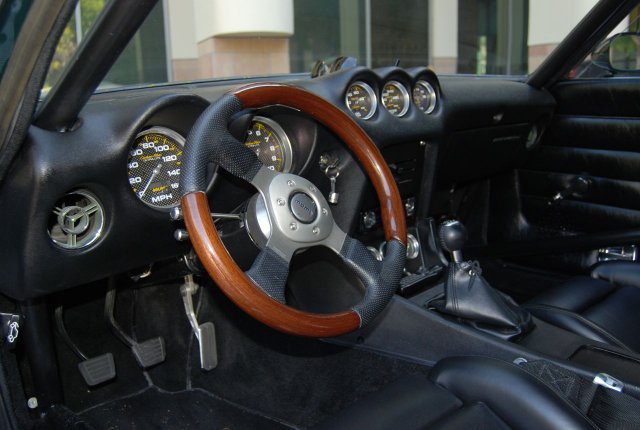
jhalsey
Members-
Posts
13 -
Joined
-
Last visited
Content Type
Profiles
Forums
Blogs
Events
Gallery
Downloads
Store
Everything posted by jhalsey
-
Replacement Steering Rack Alternatives for 240z
jhalsey replied to jhalsey's topic in S30 Series - 240z, 260z, 280z
-
Replacement Steering Rack Alternatives for 240z
jhalsey replied to jhalsey's topic in S30 Series - 240z, 260z, 280z
Not much room under my dash and $6k plus labor for the electric system is not a bargain, plus i would still have the free play in the rack. I will focus on Subaru racks, my shop has a rack rebuilder near by, should be able to compare Z to Ru units and see what the issues are. thanks for the help. -
Replacement Steering Rack Alternatives for 240z
jhalsey replied to jhalsey's topic in S30 Series - 240z, 260z, 280z
Yes, I agree, these are candidates to be investigated. The problem is there seems to be no way to obtain the physical dimensions of these various racks and compare them to the stock Z rack other than placing them side by side on a bench. I was hoping there are some members who have hands on experience with some of these racks in a Z and can shed light on which will fit and work better than others. -
I realize that the topic of what manual or power steering rack alternatives exist for 240Z owners has been discussed a lot and I have tried to read as many as I can find but I have a challenge that I would appreciate help with. I have a heavily modified 72 240Z. The car has been seen here a few times over the years in various stages of development. It is now finished except for one fundamental problem: the steering effort is very high and the rebuilt steering racks (2) that i have used have only lasted a few hundred miles each before developing excessive free play on center. The car has a Viper engine, T56, R200 drive train. The reason the steering effort is high is that there is greater than stock weight over the front axle (despite moving the firewall back 4" and the oil pan front lip is right behind the rack) and the front tires are larger than stock (225x18). As new parts to rebuild the steering racks are no longer available from Nissan, the re-builders use various tricks to tighten up these racks (e.g. shot peening the pinion gear). In my application, this results in premature wear and free play due to the higher than stock loads being carried by the rack. These rebuilt racks may be fine for stock applications. I even wrote to the CEO of Nissan outlining the problem with NLA steering racks and repair parts and it constituting a safety issue as these cars get older. Still holding my breath for the reply. So since I cannot locate a new (not rebuilt) OEM 240Z rack, I have to find a suitable rack that will interchange with minimum modifications. I have .2" rear clearance to the oil pan. I have seen mentions of Toyota MR2 and Subaru power racks being installed. I would be happy to fit a power rack if i can find one that is dimensionally similar and does not interfere with the oil pan. I would also consider a manual rack in which case I would also be looking for a slower steering ratio to decrease the effort and also will probably fabricate 1" longer steering knuckles to also reduce steering effort. If anyone has a pair of stock steering knuckles for sale I would like to purchase them so the car does not have to be apart while the knuckles are being fabricated and finish machined. Thanks in advance for any help.
-
sorry, been busy. my GT350 Shelby is #153, white with blue stripes, and yes, it was 2005, Group 6 on sunday when the big wreck happened.
-
going out of town for a couple of weeks, will call you when i return.
-
240Z Rear Hatch Banging over Bumps
jhalsey replied to jhalsey's topic in Trouble Shooting / General Engine
The down stoppers appear to adjustable only in the fore and aft direction. Service manual has a confusing description. First it says the there is only adjustment in the front / rear direction (using the slotted screw holes). Then it says there is 5 mm of up and down adjustment but i can't see how. There is just a polyethylene wedge that slides up and down in the channel with a return spring under it. You would have to change the bottom piece that supports the spring with a taller one to raise the engagement point. -
Here is a thread on my car: http://forums.hybridz.org/showthread.php?p=1039819#post1039819 as for weight, the Gen II crate motor weighs 505 lbs dressed with starter, clutch, flywheel, power steering pump, alternator, a/c compressor and serpentine system. The Viper T56 is heavy, though, about 140 lbs. there is considerable fabrication required to do it right: 1) to get the engine to sit behind the front axle centerline and down, the firewall needs to go back 4", to clear the trans, the floorpan needs serious reshaping and 2) the chassis needs to be stiffened, this was done by slicing two box section beams into the floorpan front to rear. A 10 point roll cage also was installed fitted very closely to the a pillars and roof. and 3) a new front cross member for the steering rack and one for the trans. 4) also needs the largest radiator and oil cooler possible with powerful electric fans not trivial, but i now have 300 miles on it and while we are still sorting out issues, i am enjoying it greatly. Only thing i would do differently is maybe put some discreet louvers in the hood. I am also going to change the steering rack ratio to slow it down and decrease the steering effort which is heavy at slow speed but fine otherwise.
-
240Z Rear Hatch Banging over Bumps
jhalsey replied to jhalsey's topic in Trouble Shooting / General Engine
The rubber bump stops are in place, as are the dovetails and down stoppers. I also don't think the sheet metal around the lock on the lid is flexing on my car, its pretty stiff. I have the striker adjusted so it just barely closes when closed forcefully. It's better than it was when i first started but still not acceptable. There is a 1/4" hole about 4" down from the bumpers on each side on the body, not threaded. Not sure what is supposed to go there, nothing showing in the svc manual. -
The headers are stock Gen II Viper crate motor stainless units, we modified the collectors to face rearward and use V band clamps, the stock collector is designed for side exhaust. Then they were Jet Hot ceramic coated inside and out. Exhaust from there back is oval, equivalent in cross section to 3" round, for ground clearance.
-
I raced my 65 shelby there in 2006 when the big wreck in group 6 occurred, i was first car NOT to hit the pile, big pucker moment though because didn't see the pile until i crested the hill onto the main straight at 135 mph. Great track though, and Elkhart Lake town and folks were awesome, hope to go back. wipers: we mounted an aftermarket cable driven wiper solution under the passenger side inspection cover, also fuel pressure regulator and gauge live there. AN fittings: no dry sump but we did have to use a remote oil filter which sits very close by near the original filter location.
-
have a new weather strip all around, aligmnent of sheet metal is good all around the opening, all stock pieces in place, striker is adjusted as tight as i can get it and still slam it closed yet it sounds like the hatch is banging against the striker over sharp bumps. I have elongated the slots in the striker for additional travel to lower the striker as far as possible but still it bangs. Ideas ?
-
After only 7 years, the project is now on the road, sorting it out, have about 300 miles on it. Still working on a few things but its comfortable, reliable, sounds great at higher revs, gets lots of looks and with the torque i can turn a slow corner in 4th and accelerate in 4th hard without need for downshifting. Will probably be at Willow Springs in October for Cobra Club event to get some further testing done. Here's an overview with pictures of early fabrication, body and paint, final: body: stripped to bare metal, stock except for hood and deck emblems shaved, recessed side marker lights, 3 piece rear bumper converted to one piece. Brooklands green with black “Boss 302†style stripes under clear coat, V10 emblems, NO fender flares Structure: 10 point cage, steel box section beams front to back spliced through the floor pan, firewall moved back 4 inches, floor reshaped for trans clearance, fuel cell, battery relocated to rear, fuel and brake lines routed through passenger frame rail. Suspension: Arizona Z Car products front and rear, road racing struts / control arms, coil overs, adjustable shocks, 6 piston Wilwood front calipers, 4 piston rears, moustache bar, sway bars. 18x7 5Zigen front, 18x8 5Zigen rear wheels, 225x40-18 front, 275x35-18 Michelin Pilot Sport tires Drivetrain: Gen II Viper V10 crate motor (460 hp, 500 ft lbs torque), 6 speed Tremec T56 Viper trans, R200 differential, Quaife limited slip, Modern Motorsports half shafts with CV joints, oval exhaust (for ground clearance) by Doug Holmberg, balance tube, dual exhaust, Magnaflow mufflers, ceramic coated. Huge x Large alum radiator, oil cooler, hydraulic clutch Interior: BMW 3 series leather sport seats, dash modified for roll cage tube clearance and restored by Just Dashes, Autometer carbon fiber face gauges (speedo, tach, fuel, oil pressure, oil temp, volts, water temp), push to start ignition button, full stereo with subwoofer and iPod source, power door locks, Momo wood/leather steering wheel, Vintage Air A/C, heat, defrost, NOS 280Z.console Basic fabrication: Billet Works, Santa Clarita Body and Paint: McCluskey Ltd, Torrance









